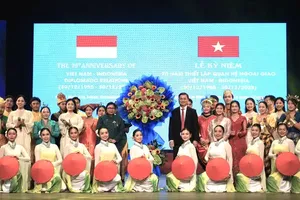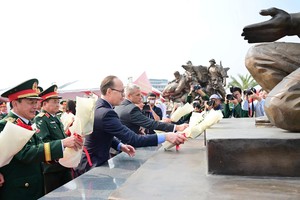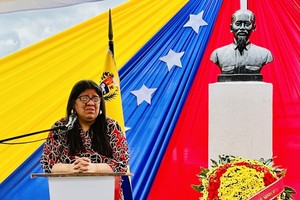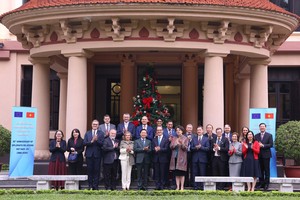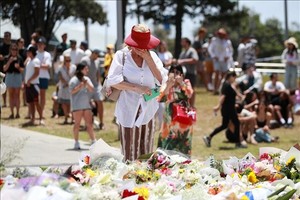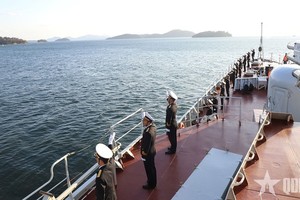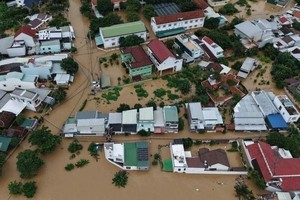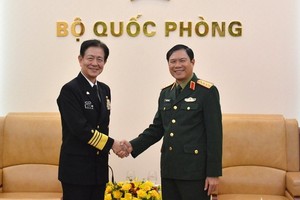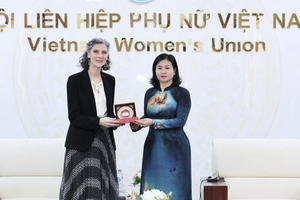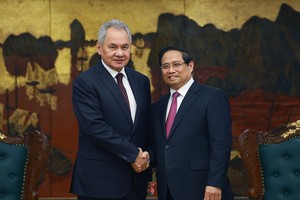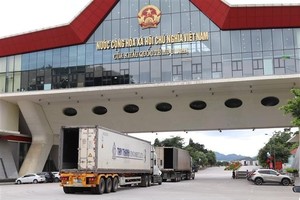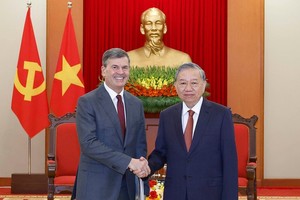The crew of China's most ambitious space mission yet -- including its first woman astronaut -- boarded a rocket Saturday for their journey to the final frontier.
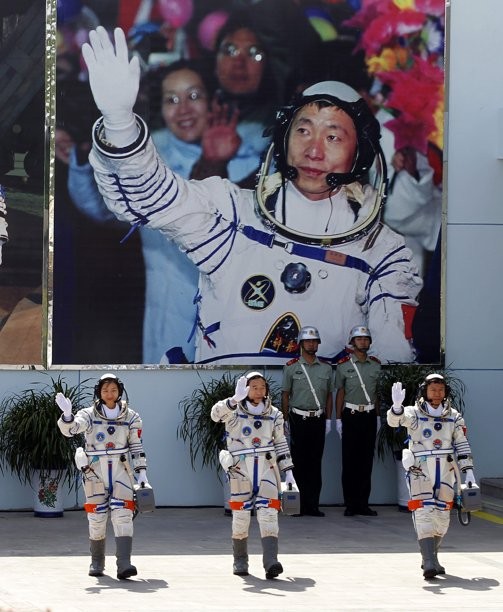
Shenzhou-9 -- China's fourth manned space mission -- was due to launch at 6:37 pm (1037 GMT) from the remote Gobi desert in the nation's northwest, in a bid to achieve the country's first manual space docking high above Earth.
The crew were headed by Jing Haipeng, a veteran astronaut who has gone to space twice already. Liu Wang, who has been in the space programme for 14 years, is in charge of manual docking manoeuvres.
Meanwhile Liu Yang, 33, who has created a stir in the media and online for becoming China's first woman to travel to space, will conduct aerospace medical experiments and other space tests.
At a pre-departure ceremony broadcast on state TV Wu Bangguo, chairman of the National People's Congress, told them: "The country and the people are looking forward to your successful return."
The mission will last 10 days, during which the crew will perform experiments and the manual space docking -- a highly technical procedure that brings two vessels together in high speed orbit.
Successful completion of the rendezvous between the Shenzhou-9 ("Divine Vessel") and the Tiangong-1 ("Heavenly Palace") module already in orbit will take China a step closer to setting up its own space station in 2020.
The Asian powerhouse last year achieved a similar docking, but that mission in November was unmanned and the procedure was conducted remotely from Earth.
"The manual space rendezvous... is a huge test for astronauts' ability to judge spatial position, eye-hand coordination and psychological abilities," Jing told reporters ahead of the launch.
He added that the three would work well together after months of intense training that saw them rehearse the mission some 16 hours a day.
"One glance, one facial expression, one movement... we understand each other thoroughly," he said.
The team have rehearsed the procedure more than 1,500 times in simulations, Wu Ping, spokeswoman for China's manned space programme, told reporters.
But more than the upcoming challenge, it is the inclusion in the crew of Liu Yang -- a trained pilot and major in the People's Liberation Army who began astronaut training two years ago -- that has captivated China's people.
China sent its first person into space in 2003 and has since conducted several manned missions, the latest in 2008, but has never yet included a woman.
Liu's mission will make China the third country after the Soviet Union and United States to send a woman into space using its own technology.
China sees its space programme as a symbol of its global stature, growing technical expertise, and the Communist Party's success in turning around the fortunes of the once poverty-stricken nation.
An editorial in the state-run Global Times newspaper on Saturday said that China needed to "cement its strategic gains made during the years," which called for "a stronger presence in outer space."
"The three astronauts aboard Shenzhou-9 personify China's long-term space aspirations," it added.
A white paper released last December outlined China's long-term ambitions to "conduct studies on the preliminary plan for a human lunar landing".
The current programme aims to provide China with a space station in which a crew can live independently for several months, as at the old Russian Mir facility or the International Space Station.

